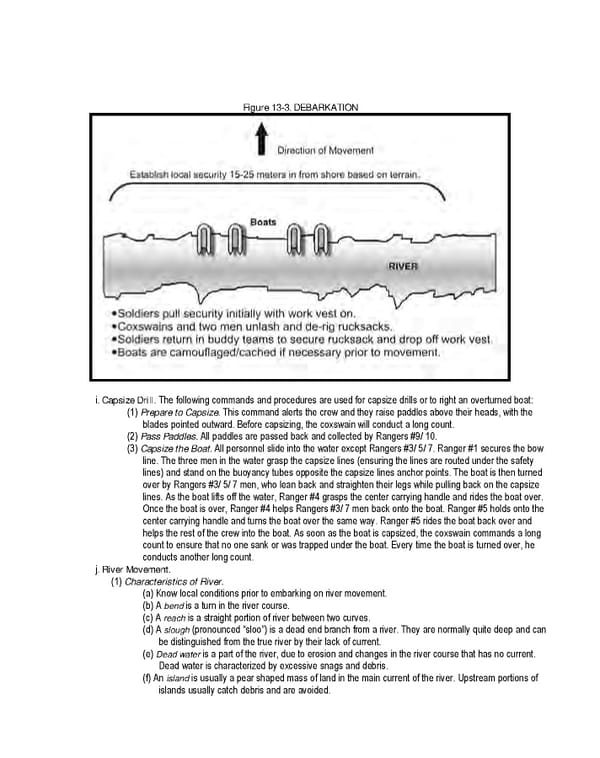Figure 13-3. DEBARKATION i. Capsize Drill. The following commands and procedures are used for capsize drills or to right an overturned boat: (1) Prepare to Capsize. This command alerts the crew and they raise paddles above their heads, with the blades pointed outward. Before capsizing, the coxswain will conduct a long count. (2) Pass Paddles. All paddles are passed back and collected by Rangers #9/ 10. (3) Capsize the Boat. All personnel slide into the water except Rangers #3/ 5/ 7. Ranger #1 secures the bow line. The three men in the water grasp the capsize lines (ensuring the lines are routed under the safety lines) and stand on the buoyancy tubes opposite the capsize lines anchor points. The boat is then turned over by Rangers #3/ 5/ 7 men, who lean back and straighten their legs while pulling back on the capsize lines. As the boat lifts off the water, Ranger #4 grasps the center carrying handle and rides the boat over. Once the boat is over, Ranger #4 helps Rangers #3/ 7 men back onto the boat. Ranger #5 holds onto the center carrying handle and turns the boat over the same way. Ranger #5 rides the boat back over and helps the rest of the crew into the boat. As soon as the boat is capsized, the coxswain commands a long count to ensure that no one sank or was trapped under the boat. Every time the boat is turned over, he conducts another long count. j. River Movement. (1) Characteristics of River. (a) Know local conditions prior to embarking on river movement. (b) A bend is a turn in the river course. (c) A reach is a straight portion of river between two curves. (d) A slough (pronounced “sloo”) is a dead end branch from a river. They are normally quite deep and can be distinguished from the true river by their lack of current. (e) Dead water is a part of the river, due to erosion and changes in the river course that has no current. Dead water is characterized by excessive snags and debris. (f) An island is usually a pear shaped mass of land in the main current of the river. Upstream portions of islands usually catch debris and are avoided.
 Ranger Handbook Page 243 Page 245
Ranger Handbook Page 243 Page 245